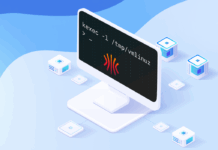Arresting climate change is no longer an option but a must to save the planet for future generations. The key to doing so is to transition off fossil fuels to renewable energy sources and to do so without tanking economies and our very way of life.
The energy industry sits at the epicenter of change because energy makes everything else run. And inside the energy industry is the need for a rapid transition to electrification and our vast power grids. Like it or not, utilities face existential decisions on transforming themselves while delivering ever more power to more people without making energy unaffordable or unavailable.
The challenges are daunting:
How to move away from fossil fuels without crashing the global economy that is fueled by energy?Is it possible to speed up the modernization of the electric grid without spending trillions of dollars?Can this be done while ensuring that power is safe, reliable, and affordable for all?
These are all significant problems to solve and represent 75% of the problem in combating climate change through decarbonization. In the Linux Foundation’s latest case study, Paving the Way to Battle Climate Change: How Two Utilities Embraced Open Source to Speed Modernization of the Electric Grid, LF Energy explores the opportunities for digital transformation within electric utility providers and the role of open source technologies in accelerating the transition.
Open Source meets climate change challenges with LF Energy
The growth of renewable energy sources is making the challenges of modernizing the modern grid more complicated. In the past, energy flowed from coal and gas generating plants onto the big Transmission System Operator (TSO) lines and then to the smaller Distribution System Operator (DSO) lines to be transformed into a lower voltage suitable for homes and businesses.
But now, with solar panels and wind turbines increasingly feeding electricity back into the grid, the flow of power is two-way.
This seismic shift requires a new way of thinking about generating, distributing, and consuming energy. And it’s one that open source can help us navigate.
Today, energy travels in all directions, from homes and businesses, and from wind and solar farms, through the DSOs to the TSOs, and back again. This fundamental change in how power is generated and consumed has resulted in a much more complicated system that utilities must administer. They’ll require new tools to guarantee grid stability and manage the greater interaction between TSOs and DSOs as renewables grow.
Open source software allows utilities to keep up with the times while lowering expenses. It also gives utilities a chance to collaborate on common difficulties rather than operating in isolation.
The communities developing LF Energy’s various software projects provide those tools. It’s helping utilities to speed up the modernization of the grid while reducing costs. And it’s giving them the ability to collaborate on shared challenges rather than operate in silos.
Two European utility providers, the Netherlands’ Alliander and France’s RTE are leading the change by upgrading their systems – markets, controls, infrastructure, and analytics – with open source technology.
RTE (a TSO) and Alliander (a TSO) joined forces initially (as members of the Linux Foundation’s LF Energy projects) because they faced the same problem: accommodating more renewable energy sources in infrastructures not originally designed for them and doing it at the speed and scale required. And while they are not connected due to geography, the problems they are tackling apply to all TSOs and DSOs worldwide.
Two electric utility providers collaborate on shared technology investments, together
The way that Alliander and RTE collaborated via LF Energy on a project known as Short Term Forecasting, or OpenSTEF, illustrates the benefits of open source collaboration to tackle common problems.
“Short-term forecasting, for us, is the core of our existence,” According to Alliander’s Director of System Operations, Arjan Stam. “We need to know what will be happening on the grid. That’s the only way to manage the power flows,” and to configure the grid to meet customer needs.“The same is true for RTE and “every grid operator across the world,” says Lucian Balea, RTE’s Director of Open Source.
Alliander has five people devoted to OpenSTEF, and RTE has two.
Balea says that without joining forces, OpenSTEF would develop far less quickly, and RTE may not have been able to work on such a solution in the near term.
Since their original collaboration on OpenSTEF, they have collaborated on additional LF Energy Projects, CoMPAS, and SEAPATH.
CoMPAS is Configuration Modules for Power industry Automation Systems, which addresses a core need to develop open source software components for profile management and configuration of a power industry protection, automation, and control system. ComPAS is critical for the digital transformation of the power industry and its ability to move quickly to new technologies. It will enable a wide variety of utilities and technology providers to work together on developing innovative new solutions.
SEAPATH, Software Enabled Automation Platform and Artifacts (THerein): aims to develop a platform and reference design for an open source platform built using a virtualized architecture to automate the management and protection of electricity substations. The project is led by Alliander, with RTE and other consortium members contributing.
As we move to a decarbonized future, open source will play an increasingly important role in helping utilities meet their goals. It’s already helping them speed up the grid’s modernization, reduce costs, and collaborate on shared challenges. And it’s only going to become essential as we move toward a cleaner, more sustainable energy system.
Read Paving the Way to Battle Climate Change: How Two Utilities Embraced Open Source to Speed Modernization of the Electric Grid to see how it works and how you and your organization may leverage Open Source. Together, we can develop solutions.
The post LF Energy: Solving the Problems of the Modern Electric Grid Through Shared Investment appeared first on Linux Foundation.




